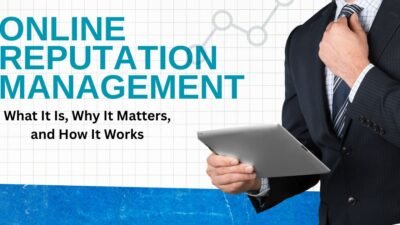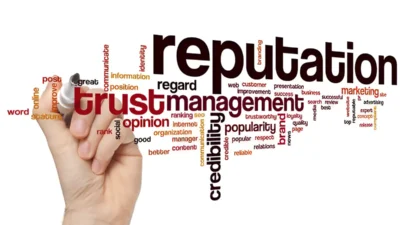Online Reputation is not only a buzzword; it’s a business asset. For big companies and small, the way your brand is perceived in the public eye can, in turn, affect everything from sales to recruiting talent. The management of reputation is now increasingly not a choice but a business obligation. But first, what is a reputation management policy, and why does it matter? More importantly, how can we implement a strong policy that suits our business?
In this blog post, we are taking a close look at what is a reputation management policy is, why it’s necessary for every business to have one, and how to create an effective policy. This guide is built for small teams or large enterprises.
What Is a Reputation Management Policy
In its simplest form, what is a reputation management policy? It is a written approach that organizations employ to track, influence, and defend the way they are perceived publicly. It details the processes, resources, and strategies a business will use to ensure it can uphold a good reputation while handling criticism, complaints, and other events that could damage the brand.
Fundamentally, what is a reputation management policy for if not to ensure everyone knows the team’s response to company values, how we communicate externally, and how we respond to crises? In addition to avoiding only reactive measures, it places a premium on actively building trust and transparency, cultivating them proactively by regularly engaging with stakeholders in a positive fashion.
The Importance of Reputation Management
So, here’s why a reputation management policy should be clearly understood in the digital-first world today, before we delve into the policy itself:
-
Affects Consumer Choices: 87% of consumers read online reviews before buying, as per a 2023 BrightLocal survey. When it comes to sales, the reputation of your business can have an impact.
-
Builds Trust: Trust is more likely to keep customers, employees, and investors around. Honest reputation management builds credibility.
-
Provides Help for Crisis Forces: Bad reviews, PR crises, or social media blows can hit your forces overnight. Transparent structure for reputation management lessens long-term harm.
-
Improves SEO: Having a clean and respectful online presence can improve credibility and search rank for your brand.
Appreciating the value of what is a reputation management policy is the first step to realizing you need your own policy.
Essence of a Good Reputation Management Policy

Not all reputation management strategies are the same, but the best among them all contain these fundamental components of what is a reputation management policy done right:
Brand Guidelines
The kind of tone of voice, mission, and values that your brand has will form the basis of how you plan your reputation management strategy. Attach a comprehensive brand instruction list, which should be followed by all members of your company.
Example: If you have a friendly and approachable brand tone, your replies to customer reviews or comments online should also be friendly and approachable.
Monitoring Mechanisms
A key element in what is a reputation management policy is how your organization reviews mentions on digital channels. Tools like Google Alerts, Hootsuite, or even reputation-sensitive platforms such as ReviewTrackers enable you to be proactive.
Best Practices:
- Track brand mentions on social media, forums, review sites (e.g., Yelp), and search results.
- Have certain staff or groups responsible for monitoring, so that you don’t miss out on any important changes.
Crisis Response Protocols
There isn’t a company on this planet that isn’t going to get some negative feedback or have a PR issue. A robust policy should set out how these situations are to be managed whilst protecting the institution’s reputation. That’s exactly where what is a reputation management policy becomes operational and measurable.
Outline Key Steps:
- There’s really no alternative other than admitting the problem.
- Apologize if you need to, but do not confess to anything you did not do.
- Provided by way of resolution or remedy.
An immediate, sincere address to a critical review from an unhappy customer can convert the unhappy reviewer into a lifelong advocate!
Best Practices for Generating and Using Content
Your reputation is largely built and maintained on the content marketing that your brand puts out—blogs, email, and social media. A central focus of what is a reputation management policy includes setting standards for content frequency, tone, and the platforms you’ll concentrate on.
Example Guidelines:
- Respond to any question or complaint made online within one day.
- Keep context-specific professionalism throughout channels (i.e. informal on Instagram, formal on LinkedIn).
Employee Training
Your workers are a reflection of your brand. Assets of any organization that may share content on their organization’s behalf or simply interact with customers in person can affect their brand’s reputation. Including employee communication standards in a reputation management policy helps ensure consistency.
Topics could include:
- SoMeEtGo: Employee accounts and online muscular dystrophy behaviour.
- Managing customer complaints.
- Legal or ethical considerations for consumer data (private information).
Feedback and Iteration Loop
No policy is static. You need to inspect and adapt in order to stay current and impactful with your reputation management plan. A responsive framework is a must-have in what is a reputation management policy designed to evolve over time.
How to Perform an Online Reputation Management Policy
Now that you know the components of what is a reputation management policy is, here’s how you can start drafting or updating a new one.
Step 1. Define Goals
Then, ask yourself, “What is it that we want to accomplish with our reputation management policy?” These goals could be to increase positive reviews, to deal with complaints in a certain period or simply to have a unified company language across all departments.
Step 2. Audit Current Reputation
Before you craft a policy, take a look at where you currently stand. Utilize the previously mentioned monitoring tools, and try to analyze your sentiment online.
Step 3. Build a Core Team
Assign a few people to manage the reputations of these employees. This team should ideally consist of members from marketing, customer service, and PR.
Step 4. Document Guidelines
Gather it all together in a single document, from your crisis response protocol to brand engagement. Having it written down is a critical part of what is a reputation management policy is done properly.
Step 5. Leverage Technology
Automation tools such as Brand24, Mention or Sprout Social can seamlessly manage the monitoring and reporting side of your policy.
Step 6. Provide Training
Train your staff members in important parts of the policy. Simulated training exercises can also steel your team for the real thing.
Step 7. Review and Adjust Frequently
Think of your policy as a “living document,” one that grows and changes over time. Review it regularly to keep your interpretation of what is a reputation management policy in line with current trends and expectations.
Establishing Trust Through Transparency
Transparency is the backbone of reputation management. When discussing what is a reputation management policy is, it’s not only about defense, but also about earning goodwill.
Ways to stay transparent:
- Admit mistakes
- Ask for reviews
- Engage respectfully
Build Your Brand Today with a Little Strategic Protection
Reputation management is no longer an option, but rather a business necessity that affects growth, trust, and customer loyalty. If you still wonder what is a reputation management policy, think of it as the blueprint that shields your business from setbacks while cultivating loyalty.
Begin constructing your reputation management policy now, so that you can protect your brand and future-proof your success.
Learn more about: How to Improve Reputation Management: A Complete Guide





